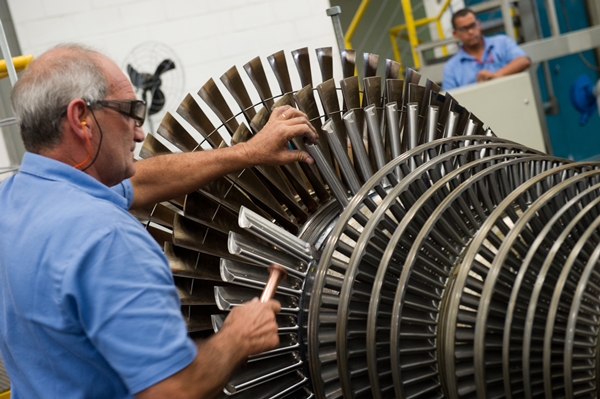Economic realignment
The postulate that Europe and the United States need to pursue reindustrialization comes with a caveat however. There should be no plans to bring back the mass production of consumer goods, a sector which migrated some time ago. Rather, the focus should be on building an industrial sector which creates research intensive products and goods of outstanding quality.
We should be making the things upon which our quality of life will depend in the 21st century. The cornerstones of such an ‘Industrialization 2.0’ would be linked to the defining trends of our time: energy efficiency, environmental protection, water shortage, and demographics.
‘Industrialization 2.0’ in Germany
Intimations of what the ‘Industrialization 2.0’ might look like can be found in Germany. There is a certain irony in the fact that of all countries, Germany, which only a few years ago was mocked for its quaint attachment to the real economy, has now been elevated to the status of role model. That said, not every European country can follow Germany’s path. The conditions on the ground are too divergent. Furthermore, a European manufacturing ‘arms race’ would strain the bonds that hold Europe together and could even diminish its overall competitiveness. So what lessons can be learnt from the German example?
Industry accounts for about 24% of Germany’s gross domestic product. Only Italy even comes close with industry there commanding a 19% share of GDP. Unlike nearly all of its European partners, Germany’s industrial sector includes a core of small to mid-sized businesses known as the Mittelstand which one can confidently call the backbone of the entire national economy and a key driver of economic gowth.
Germany is the global market leader in 27 industrial sub-sectors and many of the companies providing this lead have their roots in the Mittelstand or still belong to it. This includes brands with global reputations like Würth, Freudenberg, and Bosch. Despite revenues in the billions, their organizational structures bear the hallmarks of the Mittelstand. There are about 1,200 firms in this category which are primarily family-owned, export over 60% of their output, and have an equity ratio of at least 40%.
One of the drawbacks of family-run businesses is a recurrent lack of financial resources so solutions have to be found to secure the required credit. However, these companies are distinguished by performance and innovation, unique products, strong customer-orientation, high levels of strategic potential, and committed, highly productive employees. An entrepreneurial sense of ownership and creativity are the pillars of this part of Germany’s industrial base.
Infrastructure: a key investment
The Federal Republic of Germany’s industrial strengths do not end there however. The country’s infrastructure is, in a word, excellent. The growth of unit wage costs in the first decade has been a very moderate 3.9% (Italy – 32.5%). An exemplary dual education system streamlines the entry of new workers into the labor market. Last but not least, close cooperation among all stakeholders, including the state, contributes to the rapid flow of information among economic participants and the continual improvement of processes and products.
Thus, the German business model offers an array of ideas for ‘Industrialization 2.0’ in Europe and the United States. That said, Germany does not see its role as the continent’s schoolmaster. “What we instead need is a ‘business plan’ for each country, one which builds on their respective strengths and forms the basis for reasonable industrial policy,” says Martin C. Wittig, CEO of Roland Berger, Germany’s most prestigious strategic consultancy firm.
The European Commission should synchronize the policy of the member states and prevent destructive competition, for example by regulating subsidies. In addition to the economic benefits, this grand European plan may even help revive lost enthusiasm for the European idea itself.

